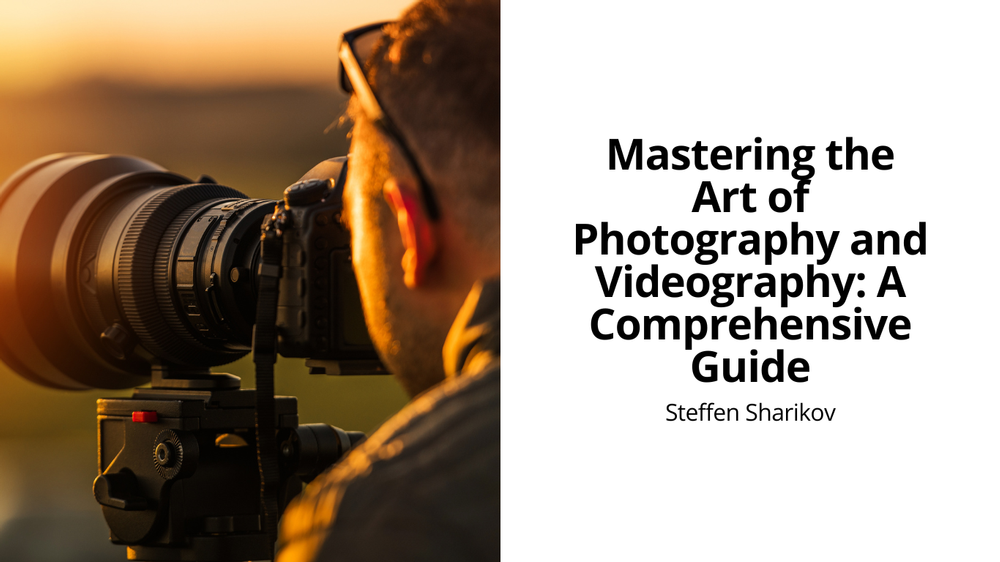Mastering the Art of Photography and Videography: A Comprehensive Guide

In the digital age, photography and videography have emerged as powerful forms of expression and communication. Whether you're a budding photographer, an aspiring videographer, or a professional looking to enhance your skills, mastering these crafts can open up endless creative possibilities. This comprehensive guide aims to explore the essentials of photography and videography, offering tips, techniques, and insights to elevate your visual storytelling.
Understanding the Basics:
Before diving into advanced techniques, it's crucial to grasp the fundamentals of photography and videography. Key concepts include:
- Exposure: Understanding how light interacts with your camera's sensor is fundamental. Exposure is determined by three main elements: aperture, shutter speed, and ISO. Mastering the balance between these settings is crucial for achieving the desired visual outcome.
- Composition: The arrangement of elements within your frame can significantly impact the effectiveness of your photo or video. The rule of thirds, leading lines, and framing are just a few composition techniques that can enhance your visual narrative.
- Lighting: Natural or artificial lighting plays a pivotal role in photography and videography. Learning how to manipulate light can help you achieve the mood and atmosphere you're aiming for.
Advancing Your Skills:
Once you're comfortable with the basics, it's time to delve into more advanced techniques:
- Editing and Post-Production: Utilizing software like Adobe Photoshop for photography and Adobe Premiere Pro for videography can transform your work. From color grading to editing cuts, post-production is where your creative vision comes to life.
- Special Techniques: Exploring time-lapse photography, aerial videography with drones, or macro photography can add a unique perspective to your portfolio.
- Storytelling: Beyond technical skills, the ability to tell a compelling story through your lens is what sets great photographers and videographers apart.
Gear and Equipment:
Investing in the right gear is essential for achieving high-quality results:
- Cameras: Whether you prefer DSLR, mirrorless, or cinema cameras, choosing the right camera depends on your specific needs and budget.
- Lenses: The lens you choose can dramatically affect the look and feel of your images and videos. Consider focal length, aperture, and lens type when making your selection.
- Accessories: Tripods, gimbals, lighting kits, and microphones are just a few accessories that can enhance the quality of your work.
Staying Inspired and Continuing Education:
The world of photography and videography is constantly evolving. Staying inspired and up-to-date with the latest trends and techniques is key:
- Online Courses and Workshops: Platforms like Udemy, Skillshare, and YouTube offer endless learning opportunities for photographers and videographers of all levels.
- Networking: Joining photography and videography communities can provide support, inspiration, and opportunities for collaboration.
- Practice: The most important aspect of mastering photography and videography is practice. Regularly challenging yourself with new projects and assignments can accelerate your growth.
Photography and videography are not just about capturing moments; they're about telling stories, evoking emotions, and sharing perspectives. By understanding the basics, advancing your skills, investing in the right gear, and staying inspired, you can unlock the full potential of your creative vision. Whether you're documenting the world around you, creating artistic expressions, or telling stories, the journey of mastering photography and videography is one of endless discovery and fulfillment.
Remember, the key to success in the digital world is not just about having the right equipment or mastering technical skills; it's about how you use these tools to convey your unique perspective and connect with your audience. So grab your camera, start shooting, and let your creative journey begin!